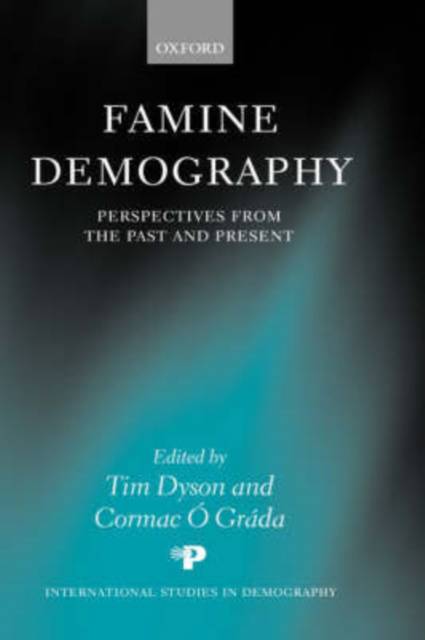
- Afhalen na 1 uur in een winkel met voorraad
- Gratis thuislevering in België vanaf € 30
- Ruim aanbod met 7 miljoen producten
- Afhalen na 1 uur in een winkel met voorraad
- Gratis thuislevering in België vanaf € 30
- Ruim aanbod met 7 miljoen producten
Zoeken
Famine Demography
Perspectives from the Past and Present
€ 354,45
+ 708 punten
Omschrijving
This book deals with the important subject of famine demography. It describes case studies of the demography of historical and more recent famines in locations as far apart as Ireland, Finland, India, Burundi, Russia, Greece, Madagascar, and Japan. The authors concern themselves with significant issues such as the role of famines in controlling population growth in the past, the nature of interactions between starvation and epidemic diseases during times of famine, and the detailed demographic consequences of famines. In the latter category issues such as the age and cause-specific profiles of excess famine mortality receive particular attention. This is the only comparative volume of its kind. It is wide-ranging in time and place, but at the same time focuses sharply on a particular subject. Consequently its contents provide a unique understanding of famine demography.
Specificaties
Betrokkenen
- Uitgeverij:
Inhoud
- Aantal bladzijden:
- 280
- Taal:
- Engels
- Reeks:
Eigenschappen
- Productcode (EAN):
- 9780199251919
- Verschijningsdatum:
- 27/06/2002
- Uitvoering:
- Hardcover
- Formaat:
- Genaaid
- Afmetingen:
- 156 mm x 234 mm
- Gewicht:
- 566 g

Alleen bij Standaard Boekhandel
+ 708 punten op je klantenkaart van Standaard Boekhandel
Beoordelingen
We publiceren alleen reviews die voldoen aan de voorwaarden voor reviews. Bekijk onze voorwaarden voor reviews.










